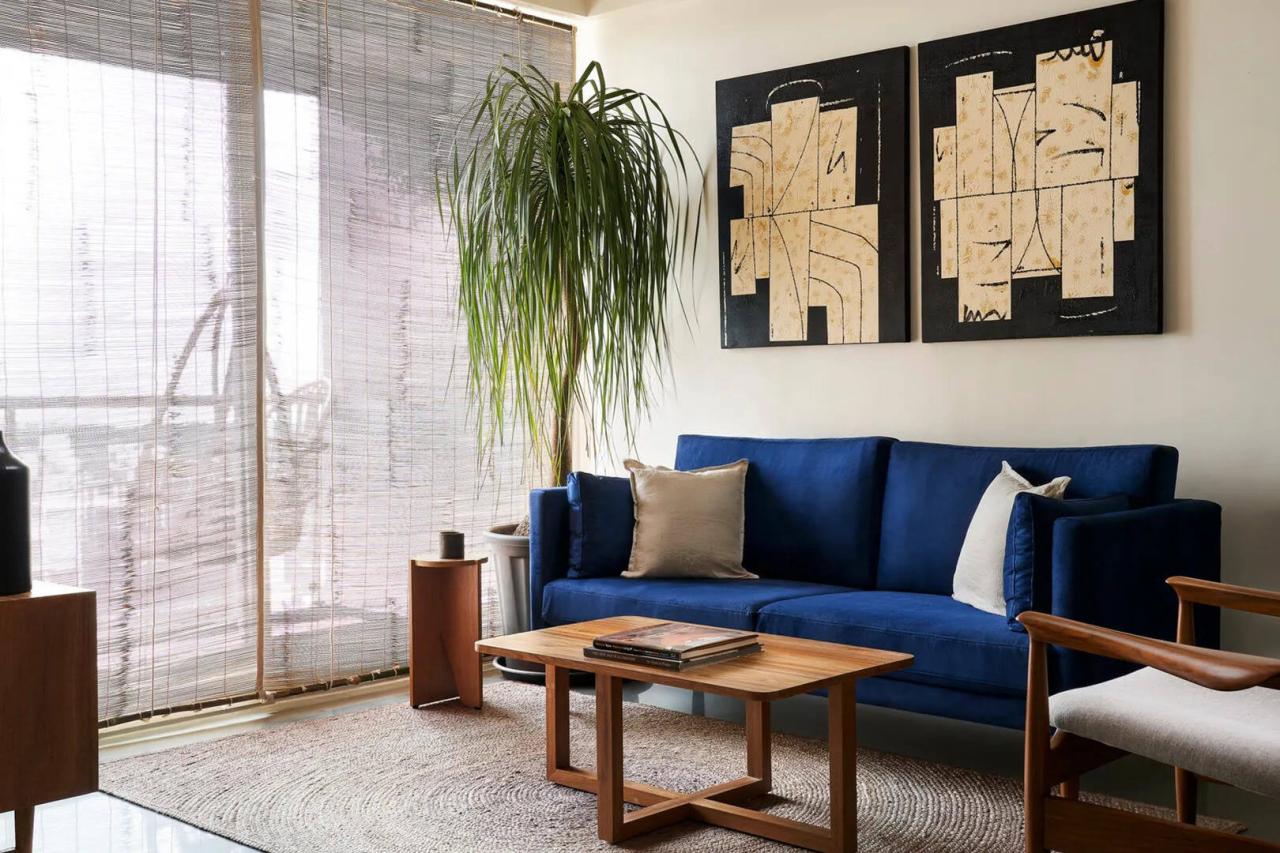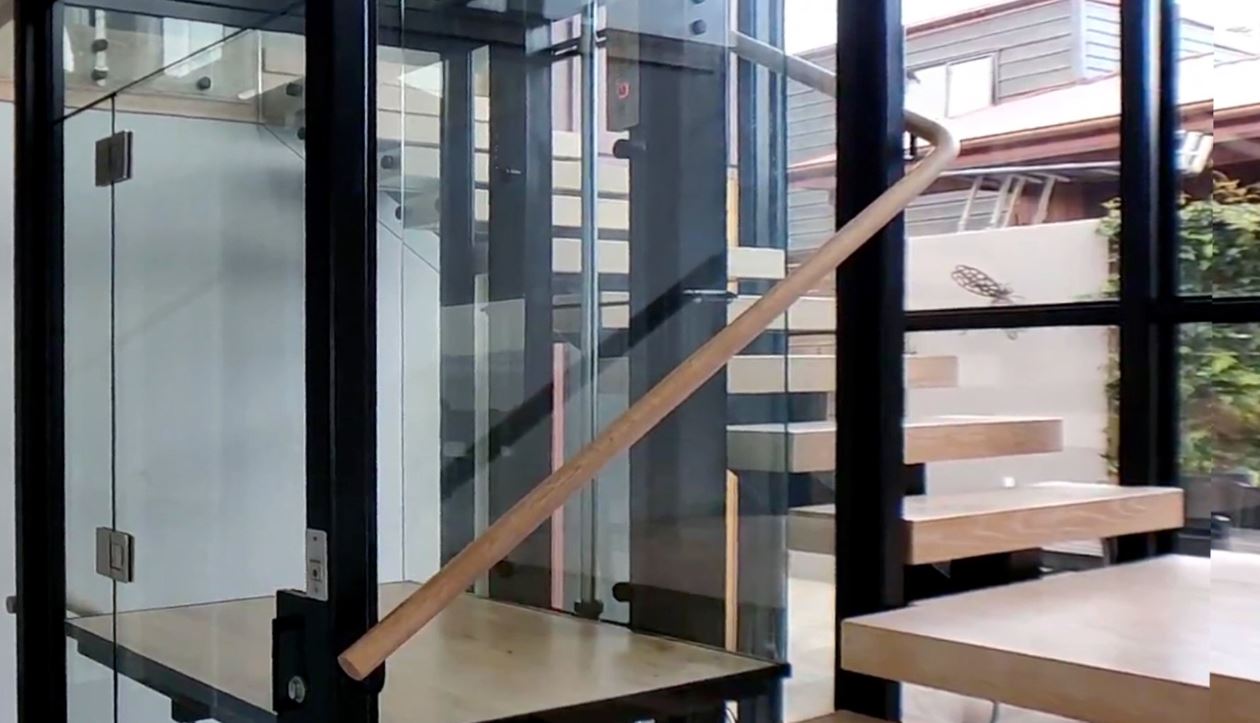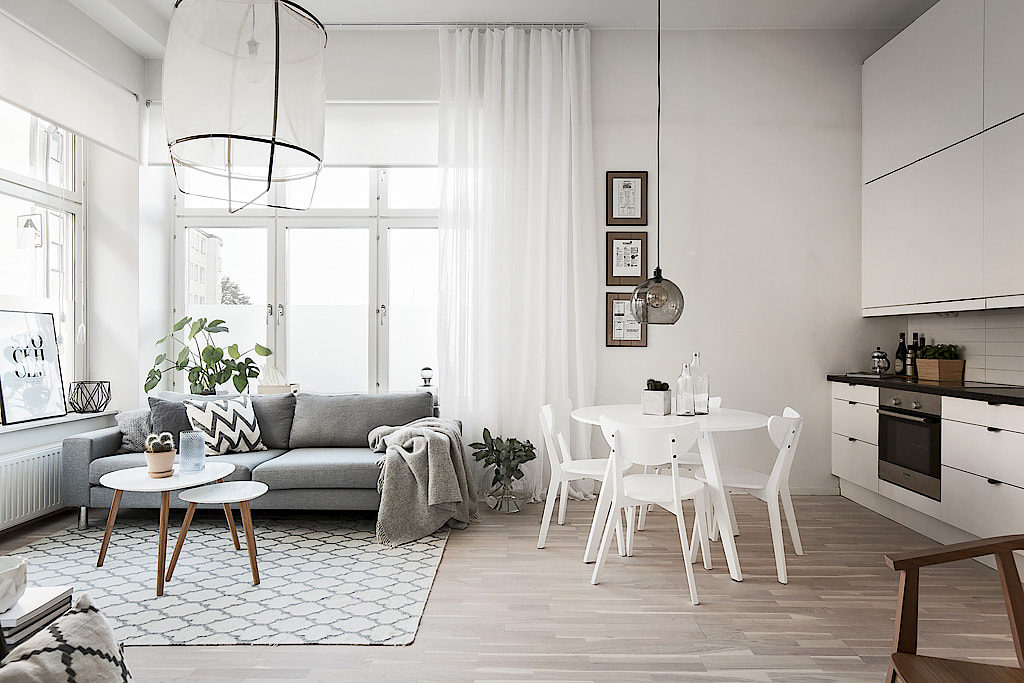How to choose the right sofa for a small living room? It’s a question many face when decorating a compact space. Finding the perfect balance between comfort, style, and functionality can feel overwhelming, but it doesn’t have to be. This guide breaks down the key considerations, from measuring your space and selecting the ideal sofa size and style to choosing materials and colors that maximize the feeling of spaciousness.
We’ll explore practical tips and design strategies to ensure your small living room feels both inviting and uncluttered.
Choosing the right sofa is crucial for maximizing both comfort and space in a small living room. A poorly chosen sofa can quickly make a room feel cramped and overwhelming, while the right one can create a surprisingly airy and inviting atmosphere. This guide provides a step-by-step approach, covering everything from understanding your space to choosing the right materials and placement strategies.
By the end, you’ll be confident in selecting a sofa that perfectly complements your small living room.
Sofa Size and Scale for Small Living Rooms
Choosing the right sofa for a small living room is crucial for maintaining both comfort and a sense of spaciousness. The key is to select a sofa that’s appropriately sized for the room’s square footage, preventing it from overwhelming the space while still providing adequate seating. Careful consideration of dimensions and visual impact is essential.
Sofa Dimensions and Recommended Room Sizes
Selecting a sofa that’s proportionate to your living room is paramount. Oversized furniture can make a small room feel cramped, while undersized furniture can look lost and leave the space feeling empty. The table below provides guidelines for sofa sizes based on room square footage. Remember that these are general recommendations, and personal preferences should always be taken into account.
| Sofa Size | Recommended Room Size (sq ft) | Approximate Dimensions (L x W x H in inches) | Considerations |
|---|---|---|---|
| Loveseat | Under 150 | 55-70 x 30-36 x 30-36 | Ideal for very small spaces; limits seating capacity. Consider a smaller depth for better flow. |
| Small Sofa (2-seater) | 150-250 | 70-84 x 30-36 x 30-36 | Offers more seating than a loveseat, but still maintains a compact footprint. Choose a sofa with slim arms to maximize space. |
| Small Sectional (L-shape or chaise) | 250-350 | 84-108 x 60-72 x 30-36 (depending on configuration) | Provides ample seating and can be configured to fit various room layouts. Consider a smaller depth to avoid blocking pathways. |
Visual Maximization of Space Using Different Sofa Sizes
A loveseat in a tiny living room (under 150 sq ft) will feel less imposing than a large sofa, allowing for better movement and making the room feel less cluttered. Imagine a small studio apartment with a loveseat positioned against a wall, leaving ample space for a coffee table and a small rug. This setup maintains a feeling of openness.In a slightly larger living room (150-250 sq ft), a small sofa provides a comfortable seating area without overpowering the space.
Consider placing it against a wall, possibly with a narrow console table behind it for extra storage and display. This allows for a more relaxed and inviting atmosphere.In a larger small living room (250-350 sq ft), a small sectional sofa can be incorporated effectively. An L-shaped sectional can define a conversation area without completely dominating the room.
Positioning it strategically, perhaps angled to maximize natural light or to create a visual separation from the dining area (if applicable), allows for both functionality and aesthetic appeal.
Accurate Space Measurement Before Purchase
Accurately measuring your space is non-negotiable before buying a sofa. Incorrect measurements can lead to a sofa that’s too large, too small, or doesn’t fit through doorways or hallways.To measure accurately, follow these steps:
1. Measure the doorway
Ensure the sofa will fit through all doorways and hallways leading to the living room. Measure both the width and height of each passageway.
2. Measure the available floor space
Determine the exact dimensions of the area where you plan to place the sofa. Consider the distance to other furniture pieces, and account for walkways.
3. Note the height of the ceiling
A very tall sofa might feel overwhelming in a room with low ceilings.
4. Measure the distance to windows and other furniture
Choosing a sofa for a small living room means prioritizing space-saving designs. Consider a loveseat or a slim sofa with clean lines. While completely different, the precision needed for a home improvement project like how to install a bathroom vanity cabinet with a concrete countertop is similar to carefully measuring your space for the perfect sofa fit.
Remember, lighter colours and simple styles can make a small room feel larger, just as a well-installed vanity can brighten a bathroom.
Ensure there’s enough space to open windows and to comfortably move around the sofa and other furniture.
5. Consider the sofa’s depth
A deeper sofa will require more floor space.These measurements, combined with the sofa’s dimensions, will prevent costly mistakes and ensure a perfect fit for your small living room. Remember to measure at least three times to ensure accuracy.
Sofa Styles and Functionality for Compact Spaces
Choosing the right sofa for a small living room requires careful consideration of both style and functionality. The ideal sofa will not only complement your space but also maximize its usability and comfort. This section explores various sofa styles and their suitability for compact living areas, highlighting their space-saving attributes and potential drawbacks.
Loveseats, Futons, Sofa Beds, Chaise Lounges, and Sectionals: A Comparison
The choice between a loveseat, futon, sofa bed, chaise lounge, or sectional significantly impacts a small living room’s functionality and aesthetic. Each offers unique advantages and disadvantages.
- Loveseat:
- Pros: Compact size, ideal for smaller spaces, cozy and intimate seating for two.
- Cons: Limited seating capacity, may not be suitable for larger families or frequent guests.
- Futon:
- Pros: Space-saving, converts from sofa to bed, offers extra sleeping space for guests.
- Cons: Can be less comfortable than a traditional sofa, may not be aesthetically pleasing to all.
- Sofa Bed:
- Pros: Provides both seating and sleeping space, useful for guests, more comfortable than a futon.
- Cons: Can be bulky when unfolded, may not be as aesthetically pleasing as a traditional sofa when folded.
- Chaise Lounge:
- Pros: Stylish and space-saving (especially corner models), offers a comfortable lounging position.
- Cons: Limited seating capacity, may not be suitable for larger families or frequent guests. Can be awkward in smaller spaces unless strategically placed.
- Sectionals:
- Pros: Offers ample seating, can be configured to fit various spaces (L-shaped, U-shaped).
- Cons: Can be bulky and overwhelming in a small room, requires careful planning for placement and traffic flow.
Optimal Placement of Sofa Styles in Small Living Rooms
Visualizing the best placement for different sofa styles is crucial. Imagine three small living room layouts: Layout 1: A square room. A loveseat placed against one wall, leaving ample space for a coffee table and a small rug, creates a cozy and uncluttered feel. A chaise lounge could be positioned in a corner, maximizing space and adding a touch of elegance.
Layout 2: A rectangular room. A sofa bed positioned along the longest wall provides seating and sleeping space without dominating the room. A small round coffee table placed in front creates a functional and balanced arrangement. Layout 3: A narrow rectangular room. An L-shaped sectional is positioned to hug two adjacent walls, creating a comfortable seating area without obstructing traffic flow.
A slim console table can be used to create separation between the sofa and the wall.
Built-in Storage and Multi-functional Sofas for Space Maximization
Choosing a sofa with built-in storage or multi-functional features significantly improves space utilization in small living rooms.For example, a sofa with drawers underneath can store blankets, pillows, or other items, keeping the living room clutter-free. Some sofa beds incorporate hidden storage compartments in their design. Ottoman-style sofas, where the ottoman doubles as extra seating or storage, provide a flexible and space-saving solution.
A sofa with integrated shelving could provide a spot for books or decorative items, minimizing the need for additional furniture. These features enhance functionality and contribute to a more organized and aesthetically pleasing living space.
Sofa Material and Color Selection for Small Rooms
Choosing the right sofa material and color is crucial for maximizing the perceived space and overall aesthetic of a small living room. The right combination can make a small room feel larger and more inviting, while the wrong choices can make it feel cramped and overwhelming. Careful consideration of durability, maintenance, and visual impact is essential.
Sofa Material Comparison
The material of your sofa significantly impacts its durability, ease of maintenance, and visual appeal. Different materials offer varying levels of comfort and style, each suitable for different lifestyles and aesthetic preferences. The following table compares some popular choices:
| Material | Durability | Maintenance | Visual Impact |
|---|---|---|---|
| Velvet | Moderate; prone to crushing and staining, but durable if well-maintained. | Requires regular cleaning and spot treatment; professional cleaning recommended. | Luxurious and adds a touch of elegance; can appear heavy in small spaces if the color is dark. |
| Linen | Moderate; prone to wrinkling and staining, but breathable and comfortable. | Requires regular cleaning and ironing; spot treatment needed for stains. | Casual and relaxed; adds a sense of airiness and lightness. |
| Leather | High; durable and long-lasting, resistant to wear and tear. | Easy to clean; wipe spills immediately. | Classic and sophisticated; can make a room feel more formal. |
| Microfiber | High; durable, stain-resistant, and easy to clean. | Easy to clean; often stain-resistant and water-repellent. | Versatile; comes in various colors and textures, offering a modern look. |
Color Psychology and Space Perception, How to choose the right sofa for a small living room
Light and dark colors significantly influence how large a room feels. Light colors, such as pastels, creams, and light grays, reflect light, making a room appear larger and brighter. Dark colors, conversely, absorb light, creating a more intimate and cozy atmosphere, but potentially making a small room feel smaller and darker.For small living rooms with limited natural light, a light-colored sofa in a palette of creams, light grays, or soft blues can create an airy and spacious feel.
In rooms with ample natural light, a darker sofa, such as a deep navy or charcoal gray, can add depth and sophistication without overwhelming the space. Consider using a light-colored rug to further enhance the sense of spaciousness.
Sofa Fabric Pattern and Visual Impact
The pattern of your sofa fabric can dramatically impact the visual appeal and perceived size of a small living room. Small, subtle patterns, such as stripes or small florals, can create a sense of visual interest without overwhelming the space. Large, bold patterns, on the other hand, can make a room feel smaller and busier. A solid-colored sofa is a versatile option that allows for flexibility in accessorizing and changing the overall room’s style.
For instance, a small floral pattern on a light-colored sofa can add a touch of charm without making the room feel cramped, while a large geometric pattern might be better suited for a larger space.
Optimizing Sofa Placement in a Small Living Room: How To Choose The Right Sofa For A Small Living Room

Source: storables.com
Strategic sofa placement is crucial in a small living room. It significantly impacts the room’s functionality, flow, and overall aesthetic appeal. By carefully considering the sofa’s position relative to other furniture and the room’s features, you can create a space that feels both spacious and inviting.
Proper furniture arrangement maximizes space and creates a comfortable flow. Leaving adequate walking space around the sofa and other pieces is essential for ease of movement and prevents the room from feeling cramped. Natural light, focal points, and traffic patterns should also guide your placement decisions, creating a welcoming and efficient layout.
Sofa Placement Strategies for Small Living Rooms
Several arrangement strategies can optimize space and flow. Consider the room’s shape, door and window placement, and the size of your sofa when choosing an arrangement. Here are a few examples:
Imagine a small rectangular living room. One effective strategy is to place the sofa against the longest wall, creating a defined seating area. This leaves ample space for other furniture, such as a coffee table and accent chairs, while maintaining a clear pathway through the room. This arrangement is depicted as follows:
Diagram 1: Sofa against longest wall
Imagine a rectangle representing the room. The longest side has a sofa placed along its length. A coffee table sits in front of the sofa, leaving at least 3 feet of space between the sofa and the table, and the table and the opposite wall. Two accent chairs are placed at the end of the sofa, angled slightly inwards, creating a conversational grouping.
Choosing a sofa for a small living room requires careful consideration of size and style. You want something that maximizes space without feeling cramped, maybe opting for a loveseat or a compact sofa with clean lines. Thinking about maximizing space in your home reminds me of another great space-saving idea: a beautifully crafted rustic bathroom vanity cabinet made of reclaimed wood , perfect for a smaller bathroom.
Back to the living room, remember lighter colours can make the room feel more spacious, so keep that in mind when you’re sofa shopping!
The remaining space is left open, allowing for easy movement.
Alternatively, in a square room, consider placing the sofa diagonally, creating a more dynamic and less formal feel. This arrangement is shown below:
Diagram 2: Diagonal Sofa Placement
Imagine a square representing the room. The sofa is placed diagonally across the room, from one corner to the opposite side. This opens up the room and creates a visual sense of spaciousness. A small round coffee table is placed centrally in front of the sofa, leaving sufficient space to move around. This arrangement works well in rooms with minimal additional furniture.
A third option, particularly suitable for rooms with a focal point like a fireplace or window, is to position the sofa facing that feature. This draws the eye and creates a cozy and inviting atmosphere.
Diagram 3: Sofa facing focal point
Imagine a rectangle representing the room. A fireplace is centered on one of the shorter walls. The sofa is placed directly facing the fireplace, with enough space for a small coffee table in between. This arrangement naturally guides the flow of the room and creates a cozy conversational area.
Picking the perfect sofa for a small living room means considering size and style carefully. Think about the visual impact; you might want to check out Cara membuat efek bokeh/blur di android to learn how to soften background photos of potential sofas online, helping you visualize them better in your space. Ultimately, a smaller, lighter-colored sofa will often make a small room feel less cramped.
Maintaining Sufficient Walking Space
Adequate walking space around the sofa and other furniture is essential for comfort and ease of movement. Ideally, aim for at least 3 feet (approximately 90 centimeters) of clear space between furniture pieces and the walls. This allows for easy movement and prevents the room from feeling cluttered. Less space can make navigation difficult and create a feeling of confinement, especially in a small living room.
In tighter spaces, consider using multi-functional furniture, such as ottomans that serve as both seating and coffee tables, to save space.
A Step-by-Step Guide to Sofa Placement
1. Assess the Room
Measure the room and note the location of doors, windows, and any architectural features like fireplaces.
2. Identify the Focal Point
Determine the room’s natural focal point – a fireplace, a large window with a view, or a piece of artwork.
3. Consider Traffic Flow
Plan pathways that allow for easy movement around the sofa and other furniture.
4. Choose a Sofa Placement Strategy
Select an arrangement that optimizes space and complements the room’s features and focal point, using the diagrams above as inspiration.
5. Measure and Adjust
Once you’ve chosen a placement, use measuring tape to ensure there’s adequate walking space (at least 3 feet) around the sofa and other furniture. Adjust as needed.
6. Experiment
Don’t be afraid to rearrange your furniture until you find the perfect placement that maximizes both functionality and aesthetic appeal.
Considering Additional Furniture and Accessories
Choosing the right sofa for a small living room is only half the battle. Successfully furnishing a compact space requires careful consideration of every piece, ensuring both functionality and visual appeal without overcrowding. The addition of complementary furniture and accessories is crucial in creating a cohesive and inviting atmosphere. The key is to select items that enhance the sofa, not compete with it for attention.Successfully integrating additional furniture and accessories in a small living room hinges on selecting pieces that are both functional and aesthetically pleasing, without compromising the sense of spaciousness.
This involves careful consideration of size, style, and color, aiming for a balanced and harmonious overall effect. Overloading the room with too many items will negate the effort put into choosing the perfect sofa.
Finding the perfect sofa for a small living room means considering size and style carefully. You want something that maximizes space without feeling cramped, much like choosing the right bathroom vanity; finding a best quality bathroom vanity cabinet for the money requires similar attention to detail. Back to sofas, opting for a sofa bed or a slimline design can make a big difference in a small space.
Coffee Table Selection for Small Living Rooms
A coffee table is a natural companion to a sofa, providing a surface for drinks, books, and remotes. In a small living room, however, size is paramount. Opt for a smaller, lighter coffee table, perhaps a round or oval shape which often feels less bulky than a square one. A glass-topped coffee table can create an illusion of more space, as it allows the floor to be visually seen beneath.
Alternatively, a nesting coffee table set allows for flexibility; you can use one table for everyday use and add the second only when needed, saving space when not in use. Consider a lift-top coffee table, offering additional surface area for dining or working from the sofa.
Rug Selection and Placement in Small Spaces
A rug anchors the seating area and adds warmth and texture. In a small living room, choose a rug that is large enough to accommodate the sofa and at least part of the coffee table, creating a defined seating zone. Avoid rugs that are too small, as they can make the room feel disjointed. A lighter colored rug can make the space feel larger, while a darker rug can ground the seating area.
Consider the rug’s texture; a plush rug adds comfort and visual interest, while a flat-weave rug is easier to clean and maintain in a high-traffic area.
Accent Chairs and Ottomans: Enhancing Comfort and Style
While a sofa is the centerpiece, adding one or two accent chairs can create a more inviting and flexible seating arrangement. Choose chairs that complement the sofa’s style and color palette, but with a slightly different shape or texture to add visual interest. An ottoman is another versatile addition, serving as extra seating, a footrest, or even a coffee table substitute.
A smaller, round ottoman can be easily moved around and tucked away when not needed, maximizing space.
Accessories: The Finishing Touches
Accessories like cushions, throws, and lamps add personality and warmth. Choose a limited number of accessories to avoid clutter. A few well-chosen cushions in complementary colors and textures can enhance the sofa’s visual appeal. A soft throw adds warmth and comfort, while a strategically placed lamp provides ambient lighting. Consider using wall art or mirrors to create a sense of depth and space.
Remember, less is often more in a small living room.
Final Review
Transforming a small living room into a comfortable and stylish space starts with the right sofa. By carefully considering size, style, material, color, and placement, you can create a room that feels both spacious and inviting. Remember to prioritize functionality and consider built-in storage or multi-functional features to maximize space. With a little planning and attention to detail, your small living room can become the cozy and welcoming heart of your home.
FAQ Section
What if my living room is oddly shaped?
Consider a custom-made sofa or a modular sectional that can be configured to fit your unique space. You might also explore using built-in seating to create a more seamless look.
How can I make a small sofa look less overwhelming?
Choose a sofa with light-colored upholstery and simple lines. Avoid overly fussy details or bold patterns. Consider leggy furniture to give a feeling of airiness.
What about pet owners? What sofa materials are best?
Leather and microfiber are durable and easy to clean, making them great choices for pet owners. Avoid delicate fabrics like velvet which can be easily damaged by claws.
How important is the height of the sofa?
A sofa that’s too high can make a small room feel smaller. Opt for a sofa with a lower profile to create a more open and airy feel.
Can I use a large rug in a small living room?
Yes, but choose a rug that’s proportionally sized to your room. A rug that’s too large can make the room feel smaller. A smaller rug can define the seating area and make the room feel more spacious.
- High-performance glass A detailed look - June 2, 2025
- Coastal Modern House A Guide - May 6, 2025
- Floral Centerpieces A Complete Guide - April 20, 2025









